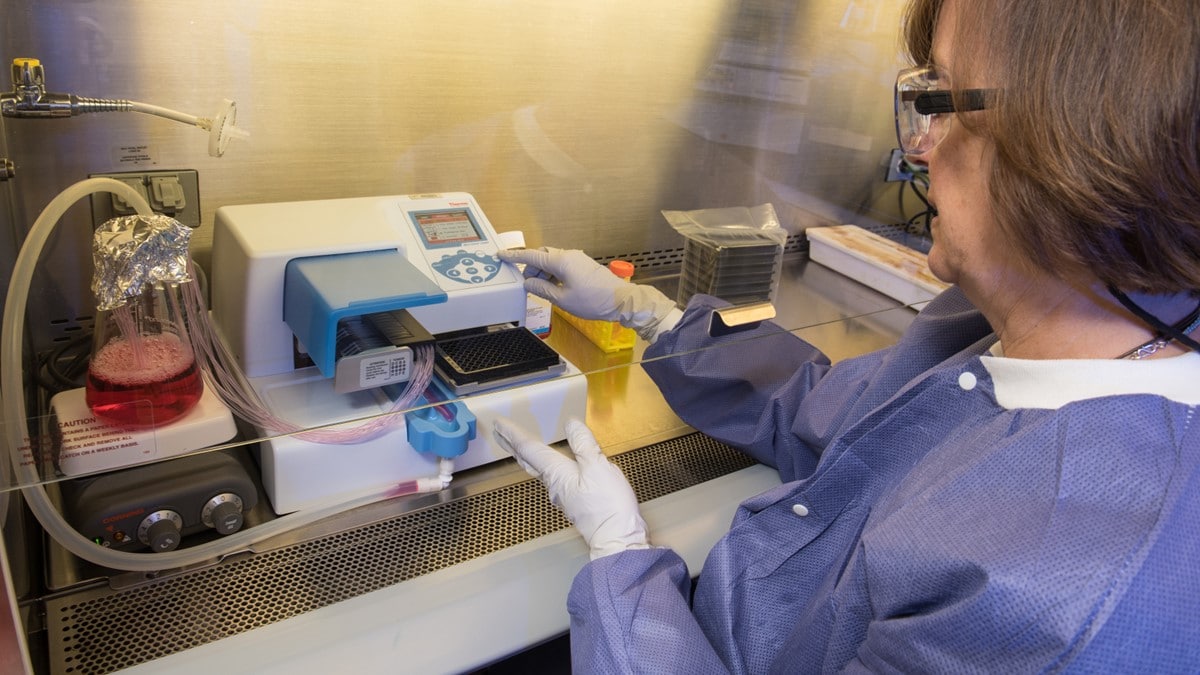What to know
- CDC's Division of Vector-Borne Diseases (DVBD) supports public health departments in several ways.
- Provides annual funding to improve laboratory capacity and disease surveillance and to prepare the workforce for potential disease outbreaks.
- Conducts diagnostic testing for state, local, and territorial health departments upon request.
- Offers reagents not commercially available.

Epidemiology and Laboratory Capacity (ELC) program
CDC's ELC cooperative agreement awards annual funding to state, local, and territorial health departments to
- Improve laboratory capacity to support vector-borne disease (VBD) surveillance
- Improve completeness and timeliness of VBD surveillance reporting
- Improve ecologic surveillance
- Increase availability of timely and accurate information on VBD risk and prevention
- Identify faster and more completely VBD outbreaks
- Better prepare the workforce to identify, diagnose, report, prevent, and respond to VBD cases and outbreaks
Through ELC, DVBD provides funding and technical assistance to implement and maintain surveillance for human disease and their vectors, to improve diagnostics, and to implement and evaluate prevention strategies. ELC vector-borne recipients are encouraged to build wide-ranging VBD programs focused on locally relevant pathogens and vectors in their jurisdictions. Core activities include:
- Active human surveillance
- Investigation and response to VBD cases
- Educational outreach
- Laboratory testing
- Hiring or training of personnel
- Vector surveillance and control
About ELC Program H
The goal of the vector-borne ELC program is to build sustainable, locally relevant programs to identify, prevent, and respond to VBD threats. ELC is a closed, 5-year funding cycle.
Funding strategy
Current fiscal year funding and awards from prior years can be found on the ELC website.
Funds are intended to support building a comprehensive VBD program based on a three-tiered approach that focuses on the most relevant VBDs in a jurisdiction.
- Basic capacity activities are the required core capacities for locally-relevant VBD surveillance, laboratory, and response.
- Enhanced capacities include VBD laboratory testing, surveillance, or response across a sub-set of jurisdictions.
Contact the VBD ELC Team: vbdelc@cdc.gov
Diagnostic testing support available
State and local health departments can coordinate diagnostic testing of VBDs with DVBD laboratories when routine testing by state, local, or commercial laboratories is not possible.
- DVBD laboratories are available to diagnose arboviral, bacterial, and rickettsial diseases.
- Testing is provided free of charge to approved agencies.
- DVBD sends final test results to the requesting lab.
- All laboratories can provide technical assistance and training to health departments upon request.
Reagents available for vector-borne disease testing
DVBD provides reagents that are not commercially available to state, local, and territorial public health laboratories. These reagents are used for diagnostic testing of arboviral and rickettsial diseases.
Public health laboratories can order reagents.
